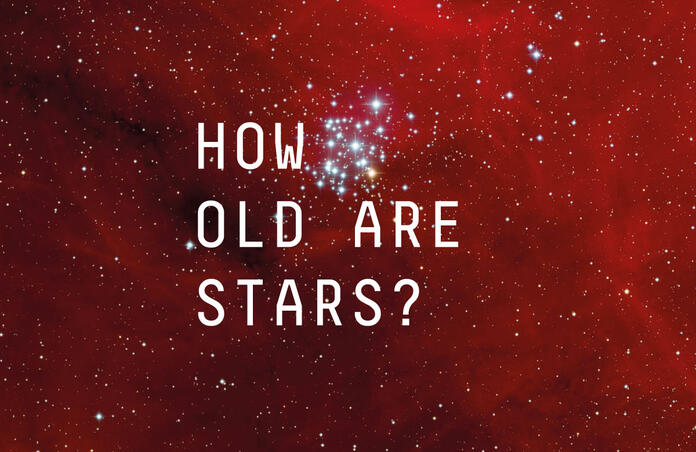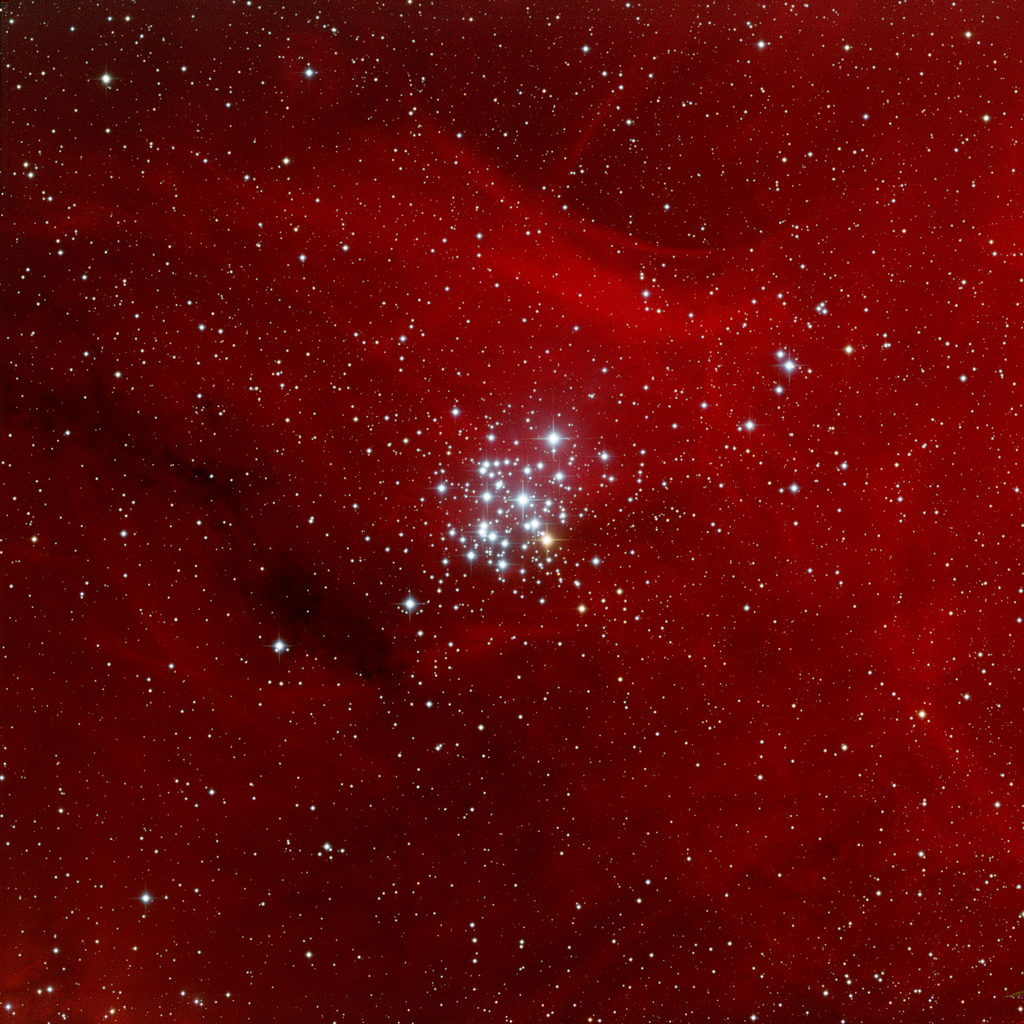How old is a Star?

As we have seen in How old is a Galaxy, estimating a galaxy’s age is a tricky question. For a star, there are properties which are easy to measure that give clear clues about its age. I’m sure you’re curious to know what these are, so read on to find out!
When talking about Star Clusters, it appeared evident that stars within a cluster are of a roughly similar age. Then, in What is a Star, we started talking about stellar evolution by looking at the Hertzsprung-Russell diagram, which as a reminder plots stars as a function of their brightness and temperature. We have also seen that stars spend most of their lives in the Main Sequence, burning Hydrogen. As well, the larger, hotter stars use up their “fuel” faster compared to smaller ones. So, knowing a star’s composition from its spectra allows astronomers to determine at what stage of its evolution it is – notably, how much Helium can you see, are any heavier elements present, etc.
Another less obvious property that is directly related to the star’s mass and age is the spin rate. Stars form from rotating disks of gas, which means that they will keep rotating during their lives, albeit at a slowing pace. This method, know as gyrochronology looks for dark sunspots (or actually, starspots) rotating out of the field of view, which provokes a slight brightening in the star. It’s the speed at which this brightening occurs that tells us about the spinning rate and thus the age of the star.

Why exactly do we wish to have that information? On one hand, we can gain some insight into the galaxy: we know that its age is linked with the star formation rate. Typically, there are Population I stars in the disk of the galaxy, these are younger and contain heavier elements; the older Population II stars can be found in the bulge. Population I star form from previous supernovae’s remnants, so they will contain these heavier elements from “birth”; this is something that needs to be kept in mind when their spectra is analysed to determine their age. Some Population II stars are the first stars to have ever lit up.
As well, from a star’s age we can learn more about potential exoplanets and their habitability (whether life could exist on them or not), for instance the rapid stellar evolution of massive star is thought to not give enough time for life to develop. Young stars tend to be active, notably expelling jets of hot plasma, which likewise makes their planetary systems less hospitable. On the other hands, exoplanets orbiting older stars which formed from a cloud with almost no elements heavier than Helium, or none at all, will be gas giants containing Hydrogen and Helium as well, and complex organic molecules won’t form.
Are you ready to star observing some stars? Discover clusters in a One-Click observation or submit your own request!
Cover Image:
The Gem Cluster, Eric Johnson, 20/04/2020 CH1
Images credits:
1. The Gem Cluster, Eric Johnson, 20/04/2020 CH1
